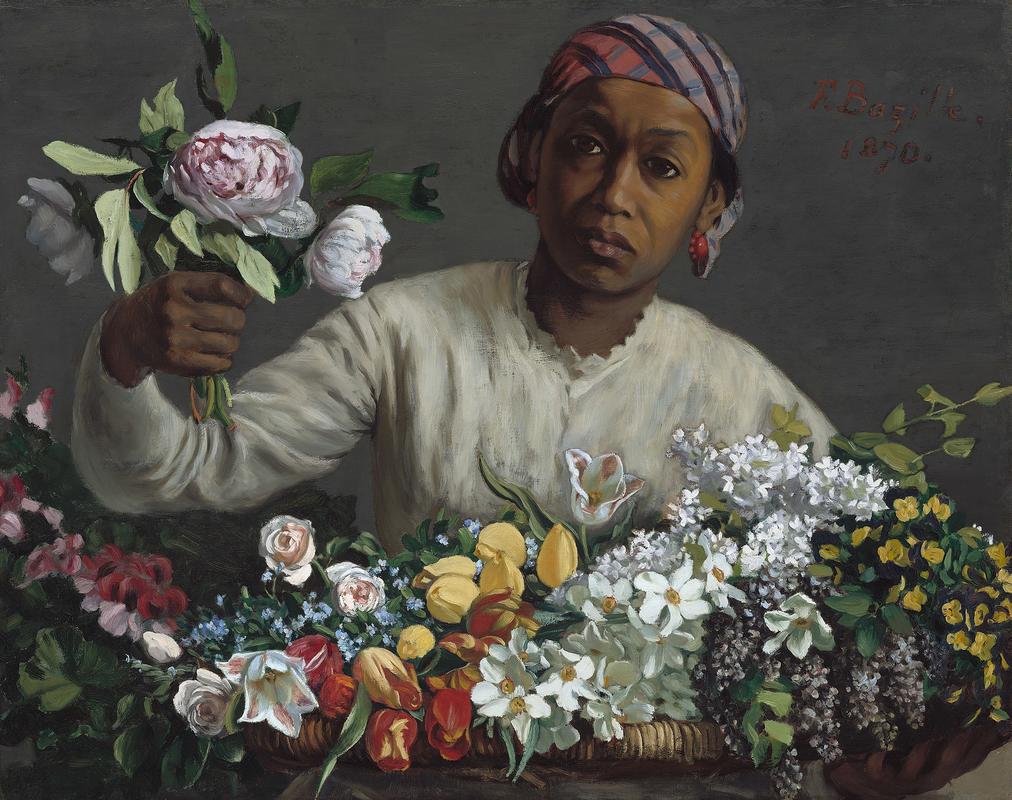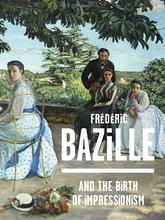More about Young Woman with Peonies
- All
- Info
- Shop

Sr. Contributor
Frédéric Bazille is nowhere near the most well-known Impressionist painter.
But don’t let that fool you – he’s someone we should definitely learn more about. A would-be artist hidden under the guise of a medical student, Bazille freed himself from his parents’ expectations to become a doctor and instead became the artist that he was meant to be. Thankfully, he lived in Paris, a city buzzing with passionate, innovative artists. There, he mingled with creative forces like Edouard Manet, and contributed to the rising Impressionist movement.
A young woman holds a basket of beautifully arranged flowers, offering her peonies for sale to us, the viewer. Influenced by the artistic genius of Manet, Bazille’s peonies echo both Manet’s painting style and his love for the flower, which he tended to in his own garden. Unlike Manet, however, Bazille puts a Black woman front and center in this painting. Her arresting gaze demands that we return the stare of her dark, brown eyes. With none of the same brazen gaze that we see here, the woman who tends to Manet’s Olympia fades into the obscurity of the picture’s background, while it is instead the white subject in the foreground who meets our eye.
So, why doesn’t anyone know who Bazille is? And how did this painting end up at the National Gallery of Art? To find the answers to these questions, we have to learn more about Paul Mellon, the painting’s last owner before it wound up in the museum’s collection. Paul Mellon was the only son of Andrew W. Mellon, famed financier, philanthropist, and art collector whose foundation continues to support art institutions and aspiring arts professionals. Paul was a lifelong lover of British art and amassed an impressive collection. His wife Rachel, a well-known horticulturist who also went by Bunny, introduced her husband to her love for Impressionist and Post-Impressionist painting. As a plant enthusiast, I imagine she must have loved the flowers in this Bazille. Over their lifetimes, Paul and Bunny donated over 1,000 artworks to the National Gallery of Art, as well as a number of other artworks to the Virginia Museum of Fine Arts and the Yale University Art Gallery.
Sources
- National Gallery of Art. “Young Woman with Peonies.” Collection. https://www.nga.gov/collection/art-object-page.61356.html#overview. Accessed 13 March 2020.
- Smith, Roberta. “A Long Overdue Light on Black Models of Early Modernism,” Art & Design. The New York Times. 1 November 2018. https://www.nytimes.com/2018/11/01/arts/design/black-models-olympia-col…. Accessed 13 March 2020.
- The Art Story. “Frederic Bazille.” Artists. https://www.theartstory.org/artist/bazille-frederic/. Accessed 13 March 2020.
- Yale Center for British Art. “Paul Mellon, Founder.” The Paul Mellon Centre for Studies in British Art. Yale University. https://britishart.yale.edu/about-us/paul-mellon-founder. Accessed 13 March 2020.












